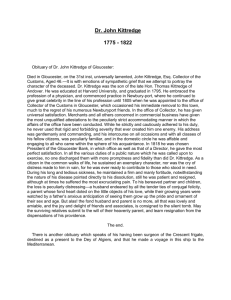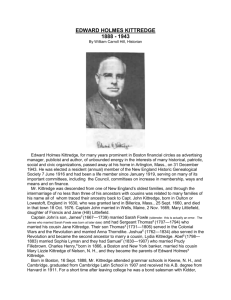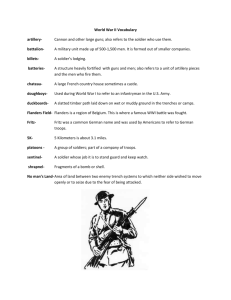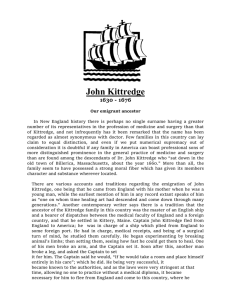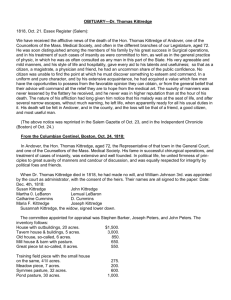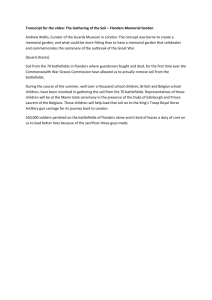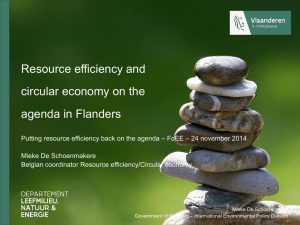Six Degree of Separation—John Cultrane
advertisement
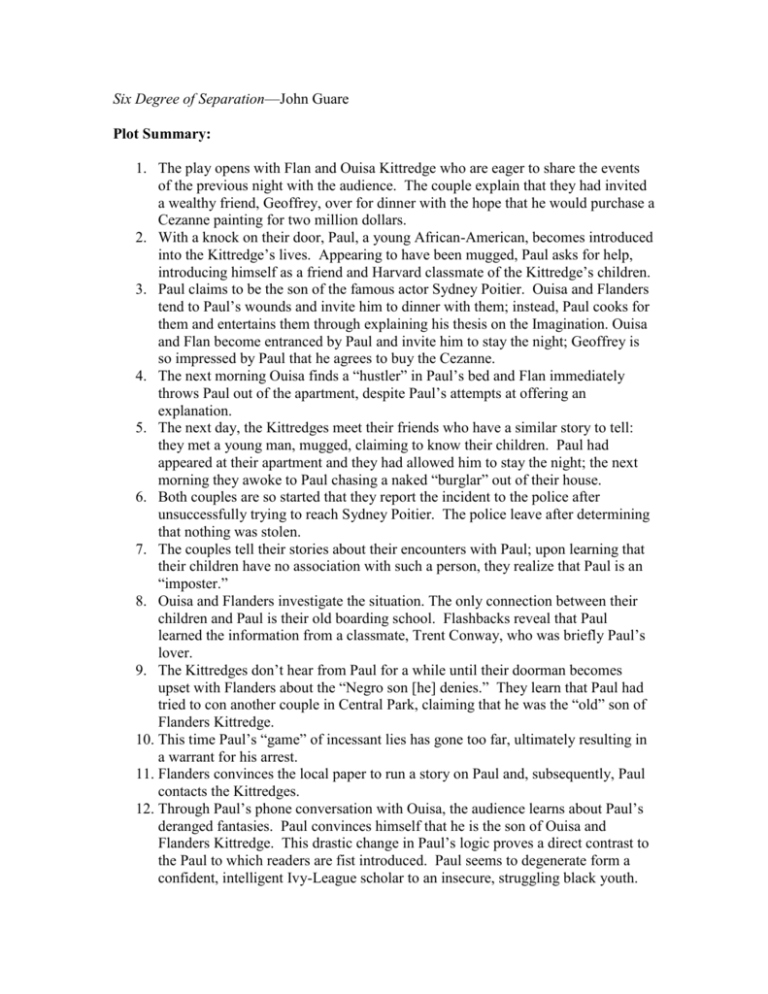
Six Degree of Separation—John Guare Plot Summary: 1. The play opens with Flan and Ouisa Kittredge who are eager to share the events of the previous night with the audience. The couple explain that they had invited a wealthy friend, Geoffrey, over for dinner with the hope that he would purchase a Cezanne painting for two million dollars. 2. With a knock on their door, Paul, a young African-American, becomes introduced into the Kittredge’s lives. Appearing to have been mugged, Paul asks for help, introducing himself as a friend and Harvard classmate of the Kittredge’s children. 3. Paul claims to be the son of the famous actor Sydney Poitier. Ouisa and Flanders tend to Paul’s wounds and invite him to dinner with them; instead, Paul cooks for them and entertains them through explaining his thesis on the Imagination. Ouisa and Flan become entranced by Paul and invite him to stay the night; Geoffrey is so impressed by Paul that he agrees to buy the Cezanne. 4. The next morning Ouisa finds a “hustler” in Paul’s bed and Flan immediately throws Paul out of the apartment, despite Paul’s attempts at offering an explanation. 5. The next day, the Kittredges meet their friends who have a similar story to tell: they met a young man, mugged, claiming to know their children. Paul had appeared at their apartment and they had allowed him to stay the night; the next morning they awoke to Paul chasing a naked “burglar” out of their house. 6. Both couples are so started that they report the incident to the police after unsuccessfully trying to reach Sydney Poitier. The police leave after determining that nothing was stolen. 7. The couples tell their stories about their encounters with Paul; upon learning that their children have no association with such a person, they realize that Paul is an “imposter.” 8. Ouisa and Flanders investigate the situation. The only connection between their children and Paul is their old boarding school. Flashbacks reveal that Paul learned the information from a classmate, Trent Conway, who was briefly Paul’s lover. 9. The Kittredges don’t hear from Paul for a while until their doorman becomes upset with Flanders about the “Negro son [he] denies.” They learn that Paul had tried to con another couple in Central Park, claiming that he was the “old” son of Flanders Kittredge. 10. This time Paul’s “game” of incessant lies has gone too far, ultimately resulting in a warrant for his arrest. 11. Flanders convinces the local paper to run a story on Paul and, subsequently, Paul contacts the Kittredges. 12. Through Paul’s phone conversation with Ouisa, the audience learns about Paul’s deranged fantasies. Paul convinces himself that he is the son of Ouisa and Flanders Kittredge. This drastic change in Paul’s logic proves a direct contrast to the Paul to which readers are fist introduced. Paul seems to degenerate form a confident, intelligent Ivy-League scholar to an insecure, struggling black youth. Ironically, Paul previously talked about the power and wonder of the imagination; his imagination now holds him captive in a fantasy, as he is unable to cope in the real world. 13. Flanders wants nothing to do with Paul but Ouisa convinces Paul to turn himself in to the police. 14. Ouisa promises to visit Paul in prison and help him start a new life when he gets out but the police arrest him before the Kittredges reach Paul. Ouisa is unable to “track [Paul] down;” she doesn’t even “know his real name.” 15. Flanders goes about his life as though Paul has had no effect on him. Ouisa fantasizes about Paul’s fate, even contemplating his “suicide” after she reads an article about an unfortunate youth in prison. 16. Ouisa openly acknowledges Paul’s influence on her life. Characters: Ouisa Kittredge—wife to Flanders Kittredge. Initially Ouisa’s world consists only of maintaining her carefully crafter reputation and preserving her wealthy lifestyle. Through her experience with Paul, Ouisa’s character undergoes a profound transformation. She gives voice to the play’s title when she revels in her realization: “there are six degrees of separation. Between us and everyone else on the planet.” Ouisa sheds her desperate need to impress society and embraces the concept of family, beginning to appreciate the significance of human relationships. Flanders Kittredge—wealthy art dealer, husband to Ouisa Kittredge. Flan’s constant obsession with the Cezanne sale seems to consume his thoughts and actions and concerns. Throughout the play, Flan appears to remain a static character. As he pauses and considers the essence of the Cezanne and its ironic relevance pertaining to the significance of his life, audiences are left to question the passive character of Flanders Kittredge. Paul (Paul Poitier-Kittredge)—the audience knows very little about the character of Paul. A young African-American male, Paul initially assumes the persona of an independent intellectual with profound insights on life, especially on the topic of the imagination. Paul creates a fantasy life for himself in which he is the son of Flanders Kittredge with Ouisa as his stepmother. Paul, a brilliant though confused individual, could not exist in the world of the Kittredges with out pretending to be someone else. Paul’s strange behavior my be attributed to his negative perception of “being black in America.” Geoffrey—a wealthy South African friend of the Kittredges who agrees to but the Cezanne. Kitty and Larkin—friends of the Kittredges who share a shockingly similar experience with the Kittredges. They too extend their hospitality to Paul and are deceived by his charm, initially believing that Paul saved their lives form a “burglar” until the Kittredges told them otherwise. Rick—Elizabeth’s boyfriend. When Paul needs money, Rick secretly makes a withdrawal for Paul form his joint account with Elizabeth. Rick and Paul have a brief, intimate sexual relationship. Devastated by his actions—betraying his girlfriend’s trust by “stealing” form their account and having “relations” with a man—Rick commits suicide by jumping out a window. Elizabeth—Rick’s girlfriend. Elizabeth and Rick both want to become actors; they believe Paul’s story that he is the ostracized son of Flanders Kittredge. She calls the police and presses charges against Paul after Rick commits suicide. Trent Conway—attended the same boarding school as the Kittredge children. Trent met Paul at MIT. Over the course of their three month affair, Trent and told Paul about the wealthy New York families that he knew Setting: The Kittredge Apartment—when the Kittredges address the audience, they do so in the present, from the “safety” of their home. As Flanders is a successful art dealer, the Kittredges feel the constant need to keep up with the changing styles. Although the Kittredges appear to have a lavish lifestyle, they have poor relationships with their children. New York City—NY has a wide variety of social classes, ranging from the extremely poor and homeless to the stereotypical “WASPs” of the upper class. This provides the perfect stage for the racial and social conflicts that Guare portrays throughout the play. Symbols: The Kandinsky—both Flanders and Ouisa constantly bring attention to this Cezanne painting, emphasizing that it is painted on both sides. The contrasting sides—one geometric and simplistic, the other vibrant and loud—of the canvas represent the chaos and control manifest in the human life. The last lines of the play act as a reminder of the irrevocable elements of life and the qualities of human nature: “The Kandinsky. It’s painted on both sides.” “there are two sides to every story…” The Sistine Chapel—a symbol of humanity’s desire for perfection. Although Michael Angelo painted this to be man touching the hand of God, this painting also gives voice to the constant human struggle for acceptance. To Ouisa, this is the ultimate work or art. The Sistine Chapel acts as a bridge between Ouisa’s internal and external reality. Ouisa constantly struggles to attain perfection and social acceptance in her life but in the midst of everything, she finds that “there is color in [her] life but [she’s] not aware of any structure. ” At the end of the play Ouisa reminisces over her visit to the Chapel, Ouisa exclaims: “the Sistine Chapel. They’ve cleaned it and its all these colors.” This statement reflects Ouisa’s transformation throughout the play. She has begun to appreciate the “color” in her life, while also learning that she must create the “structure” on her own. Motifs: Social class—the significance of social class is repeatedly evident throughout the course of the play. The Kittredges, a wealthy couple, consider themselves “upper class” although they constantly obsessively struggle to retain their coveted status. Lies/Deception—many of the characters practice some form of deception, seemingly in order to thrive as social beings. The Kittredges pretend to have the ideal life of class and style although in reality they have neither the essential financial funds nor the adequate healthy relationship with their grown children. Paul attempts to assimilate into wealthy society through pretending be the son of a famous actor while in reality he grapples with the crippling reality of race tensions, contemplating what it means “to me black” in a white man’s world. Themes: On family… The true brilliance of humanity lies in its capacity to appreciate the significance of family and meaningful relationships. On race and racism… The tensions of racism can cripple the mind of an individual, effecting an individual’s actions, thoughts, and choices. Paul’s fantasy when explaining to the Kittredges about his rich heritage, being that he considered himself the son of the affluent African-American actor Sydney Poitier. (Poitier successfully challenged the race barrier, gaining in acceptance and demanding respect from society.) o Paul: “I never knew I was black in that racist way til I was sixteen and came back here [to the United States]. ... I don’t even feel black.” Paul changes his perspective on “being black in America” when faced with the terrifying prospect of going to prison. When Ouisa urges him to turn himself in he tells her “I’ll be treated with care if you take me.... If they don’t know you’re special, they kill you.” Paul is reluctant to turn himself in to the authorities; Ouisa protests and Paul replies: “Mrs. Louisa Kittredge, I am black.” This is Paul’s fist and only admission that race has played any role in his life. On the Imagination… “The Imagination. That’s God’s gift to make the act of self-examination bearable.” The imagination acts as a bridge connecting man’s external reality with his internal ideals. Literary Criticism:1 Loosely based on an actual episode that took place in New York City in the 1980s, Guare’s Six Degrees of Separation is a contemporary play in both spirit and execution. It deals with general themes that concerned (and continue to concern) many Americans in the late 1980s, such as family relationships, class divisions, and racism. It raised specific social concerns such as abortion, AIDS, the fall of communism, and apartheid. Additionally, the characters’ constant references to popular culture symbols and icons firmly ground the play in its own era. All of these stylistic elements, combined with techniques such as the characters’ tendency to directly address the audience, make Six Degrees of Separation a witty, biting commentary on late twentieth-century urban American life. Paul and the Kittredges inhabit vastly different worlds. The Kittredges are upper-class, white New Yorkers. They live on Fifth Avenue in the same apartment building as Jackie Kennedy Onassis and the writer Louis Auchinsloss. Their children attend prestigious private schools such as Harvard University and Groton Academy. Their house is filled with trappings of the rich, from the ornate silver Victorian inkwell to the double-sided Kandinsky painting. They casually mention monetary figures that would astound the average American. Not only are the Kittredges wealthy, but they also are aware of the cultural wealth of America and of other countries. They pepper their conversation with allusions to the arts, dropping references to Pepe le Moko, a famous French film gangster trapped in one of his films in an Algerian Casbah, as easily as to a host of successful Andrew Lloyd Webber musicals. They name-drop writers and characters: Donald Barthelme, the famous postmodernist; Aeschylus, the Greek tragedian; Henry Higgins, the English professor who transformed the uneducated Eliza Doolittle into a cultured, desirable woman in George Bernard Shaw’s play Pygmalion; Scheherazade, who spun out the captivating and imaginative tales of The Thousand and One Nights.These references flow naturally in the conversation of the Kittredges and their friends, for these icons of culture are an accepted part of their world. They also refer to societal ills that take place in the world around them. One theme the Kittredges and their friend Geoffrey raise at the beginning of the play is the effects of Rena Korb has a master’s degree in English literature and creative writing and has written for a wide variety of educational publishers. In the following essay, she discusses the significance of the play’s cultural, social, and political references, and discusses how these elements affect its development. 1 racism on society as well as their own position regarding whites versus blacks. Geoffrey is a South African billionaire, thus living within the system of apartheid. As Ouisa describes Geoffrey, “He’s King Midas rich. Literally. Gold mines. . . .But he’s always short of cash because his government won’t let. . . its white people take out any money. So it’s like taking in a War Baby.” Geoffrey fully acknowledges the inequities imposed by his country’s government. While he alludes to wanting to correct the system and empower the suppressed Africans — he declares that he “has to stay there [South Africa] to educate the black workers and we’ll know we’ve been successful when they kill us.” His only concrete suggestion for bettering the situation is hosting a Black American Film Festival in his country. He can invite Spike Lee, Eddie Murphy, Diana Ross and her husband (with whom his wife went fishing), and his acquaintance Bill Cosby. The characters continually demonstrate their inherent self-absorption and their inflated egos. Ouisa believes that she and her husband live in a charmed world. In referring to nearby culinary delights, Ouisa calls New York “the Florence of the sixteenth century” with “[G]enius on every corner.” Her cultural knowledge is demonstrated by her acquaintance with the Renaissance, a time when Italian artists produced works of great beauty and lasting import. At the same time, however, her statements show the haughtiness with which she regards her world, equating it as she does with the Renaissance, which was one of the most artistic and creative periods the world has experienced. In order to enter their world, Paul must develop these arrogant habits. Just as casually as the Kittredges do, he manages to drop numerous references into his conversation. He speaks easily about the Russian playwright Anton Chekov and the English novelist/playwright Samuel Beckett. He even demonstrates a close and imaginative appraisal of J. D. Salinger’s The Catcher in the Rye, analyzing its effects on society. He brings up political actions such as the assassination attempts of Mark David Chapman and John Hinckley, Jr., and the 1976 Soweto riots in South Africa. Paul’s general knowledge was, in fact, a criticism that Eva Resnikova lodged in the National Review. “The greatest hurdle of the evening is suspending disbelief sufficiently to accept the premise of the impostor’s transformation. After all, even Eliza Doolittle was trained only to make small talk, not to hold forth on weighty intellectual topics.” What this reviewer overlooks, however, is that Paul’s knowledge is essentially stolen from other people and sources. His Catcher in the Rye monologue was a “[G]raduation speech at Groton two years ago.” Notably, Paul never is called upon to respond to comments from either the Kittredges or Geoffrey about his theory of how the novel signifies the “death of the imagination.” Additionally, Paul’s knowledge about the Soweto riots likely came from seeing a movie such as the 1989 film A Dry White Season, instead of seeing a movie being shot. By the end of the play, in his final telephone conversation with Ouisa, Paul also admits that he purposefully studies culture — arts, books, even furniture — to learn how to interact in her world. He even “made a list of things I liked in the museum. Philadelphia Chippendale.” In a sense, Paul is the collage described by Barthelme — the “art form of the twentieth century.” The musical Cats takes prominence in the play. Cats, produced by Andrew Lloyd Weber, was one of Broadway’s most successful musicals. When Guare wrote the play, it had been running for many years. The basic premise of Cats is much as Tess Kittredge puts it: “a bunch of chorus kids wondering which of them will go to Kitty Kat Heaven.” Tess reminds her parents that they originally pronounced Cats to be “an all-time low in a lifetime of theater-going.” When hearing that Sidney Poitier is going to make a movie of it, however, the Kittredges quickly change their opinion. Of course, it is not the show that interests them but the desire to be in it; or as Frank Rich writes in The New York Times, the “desire to bask in the glow of the rich and famous.” Ouisa suppresses her distaste for Cats and the meaningless art that it represents. She has a dream in which Paul takes on the role of his “father,” Sidney Poitier. Paul/Sidney explains his concern with the world that is “too heavy with all the right-to-lifers.” “And you can get all that into Cats?” Ouisa asks. When Paul/Sidney answers that he is “going to try,” Ouisa decides it is acceptable for her to play a bit role in the movie. Ouisa infuses a trite musical with the social significance of the pro-choice debate that strongly gripped the country in the 1980s in order to justify her participation. Guare also infuses the play with actual biographical information on Kandinsky and Poitier, a technique that further grounds his work in reality. This is a subtle way of reminding the audience that odd events do happen, although they seem highly unlikely. This biographical information also links with Ouisa’s theory that there exists only “THE CHARACTERS CONTINUALLY DEMONSTRATE THEIR INHERENT SELFABSORPTION AND THEIR INFLATED EGOS. OUISA BELIEVES THAT SHE AND HER HUSBAND LIVE IN A CHARMED WORLD. IN REFERRING TO NEARBY CULINARY DELIGHTS, OUISA CALLS NEW YORK ‘THE FLORENCE OF THE SIXTEENTH CENTURY’ WITH ‘[G]ENIUS ON EVERY CORNER.’” six degrees of separation. Between us and everybody else on this planet. The president of the United States. A gondolier in Venice. Fill in the names. .. . you have to find the right six people to make the connection. It’s not just big names. It’s anyone.... It’s a profound thought. How Paul found us. How to find the man whose son he pretends to be. . . . Six degrees of separation between me and everyone else on this planet. But to find the right six people.” Ouisa’s acceptance of the truth of her words allows her to form a bond with Paul, despite his treachery, his background, and his sexuality. She wants Paul to turn himself into the police so “You can start. . . . Your life.” At the same time, however, Ouisa has come to understand that she too must start her life, for, like the Kandinsky painting, her life has “color” but no “structure.” She calls herself “a collage of unaccounted-for brush strokes. I am all random.” Hearkening back to the Barthelme quote, Ouisa also represents the twentieth century, but a twentieth century lacking purpose. Paul offers the human connection that her life has been missing. As the play closes, she hears Paul’s voice telling her, “The Kandinsky. It’s painted on two sides.” The stage directions state “The Kandinsky begins its slow revolve.” Ouisa now has the option to make more of her life. She may choose to learn from her experience with Paul and give her life the structure and meaning that it lacks. Though Paul was unable to accomplish this formidable task for himself, Ouisa’s continuing interest in his whereabouts — to the point of imagining that a young man who committed suicide in jail was Paul — indicates that she may be a success. Source: Rena Korb, Critical Essay on Six Degrees of Separation, in Drama for Students, The Gale Group, 2001.

